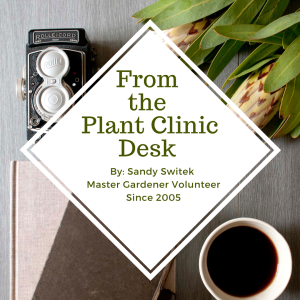Can we help the birds and wildlife at the lakefront parks by bringing them a loaf of bread when we visit?
While intentions are good, we should eat the bread ourselves instead. It can actually lead to malnutrition in wild birds, since it does not contain the nutrients that they need. They are better off with their natural food.
And there are even more reasons not to feed them.
- Flocking to a human feeding area can also contribute to the spread of disease, as more birds are concentrated in one area.
- Avian botulism is easily transmitted through the many bird droppings there.
- This does not help the water quality either.
While we like to tame the birds, it is not to their advantage.
They may become vulnerable to hostile humans, dogs, and cars. In some cases, like seagulls, they can become aggressive and steal your picnic food. Sandhill cranes can peck on house windows to beg.
Fishers also need to be vigilant. Feeding a wild bird a large fish (or having one stolen from an open bucket) can cause choking. And of course, fishing lines, fishing hooks and fish carcasses all need to be thrown into a covered trash can to prevent disasters.
So how do you get to see the birds and other creatures if you cannot draw them close to you?
- The best way is to learn the art of moving quietly, along with standing or sitting silently and waiting, and also using binoculars.
- If you want photos, you will need a strong telephoto lens to bring the beautiful subjects closer to you.
- Never attempt to scare a bird into flying away in order to go for an action photo.
We have beautiful lakefront parks in Osceola Count, along with pleasant beach parks on the coastal areas. Here are a few of my own photos which I took at local parks.
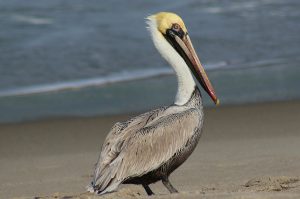
Brown pelican
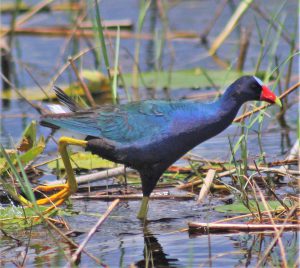
Purple gallinule – Florida’s most beautiful water bird

Great egret

Great blue heron
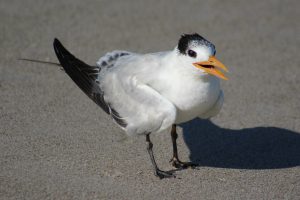
Royal tern

Florida cooter – a frequent resident of water bird areas
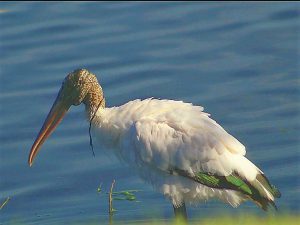
Wood stork showing iridescence on dark feathers

Anhinga female
All photos by Sandi Switek
Need more information:
For more information about Florida Friendly Plants and Wildlife you can email me at epabon5@ufl.edu or like us to learn about new classes or events at Gardening in Central Florida
By: Sandy Switek since 2005 and Eva Maria Pabon Residential Horticulture Agent
Do you want to read more about gardening? Follow our blog Eva Pabon, Author at UF/IFAS Extension Osceola County (ufl.edu)
 0
0
